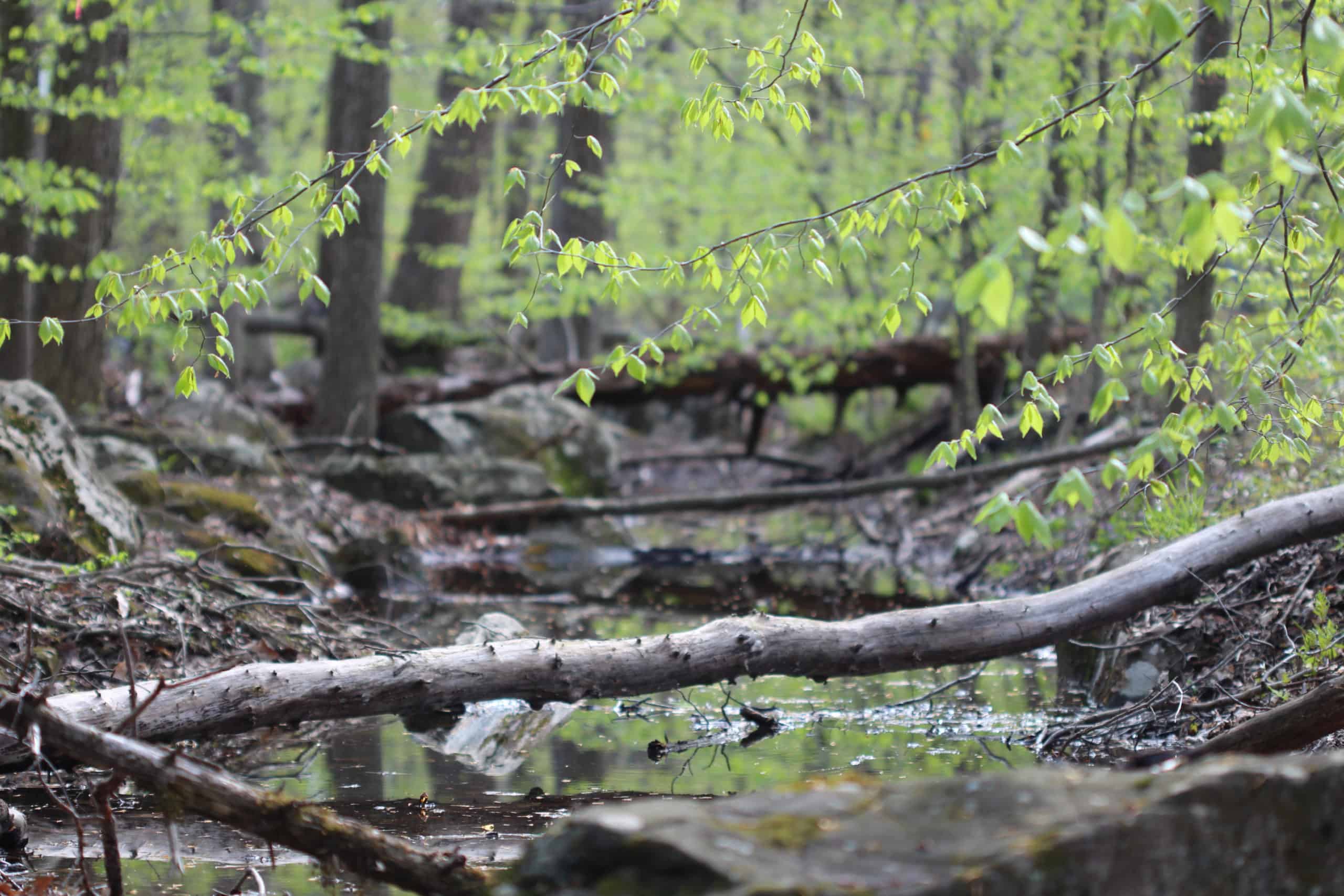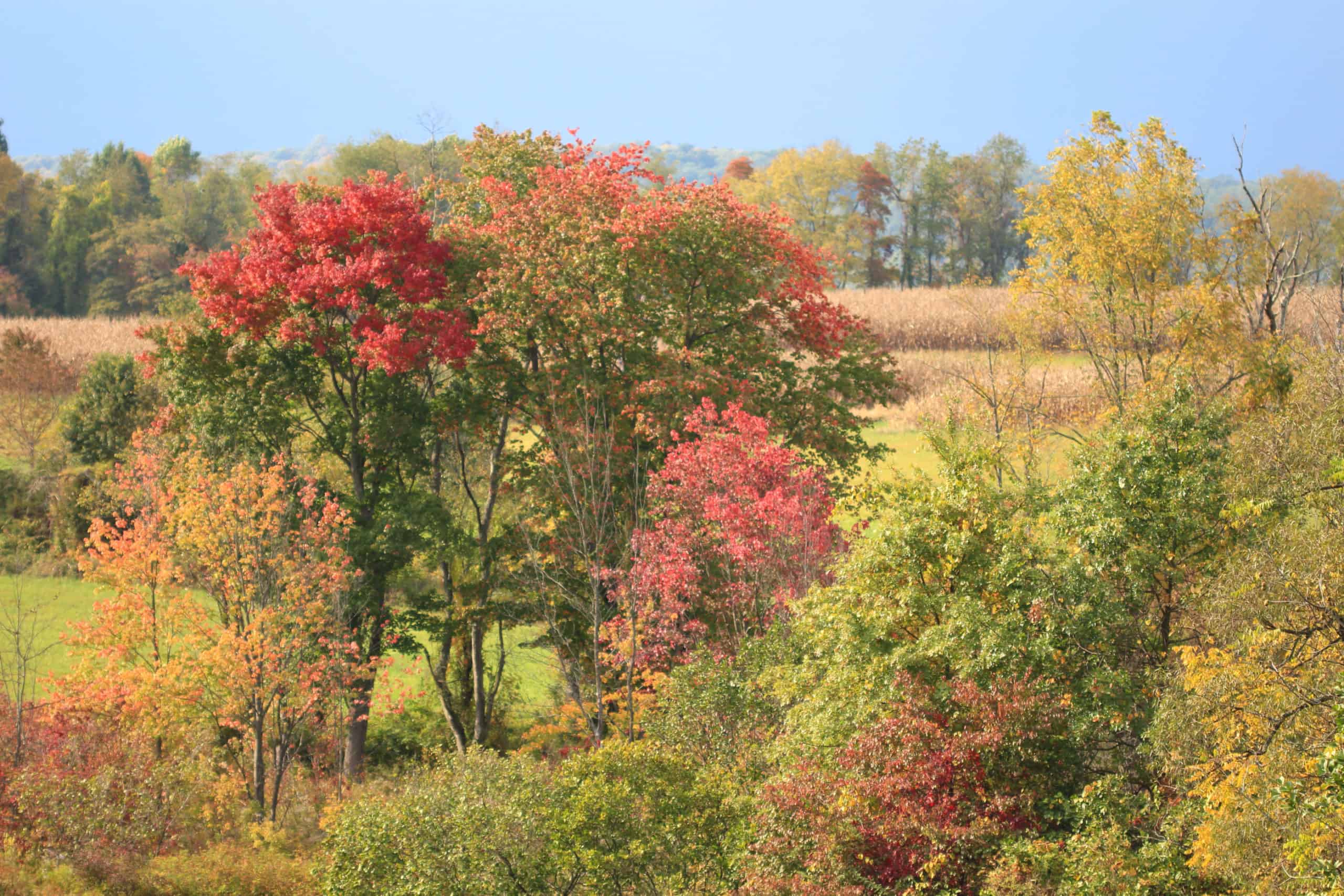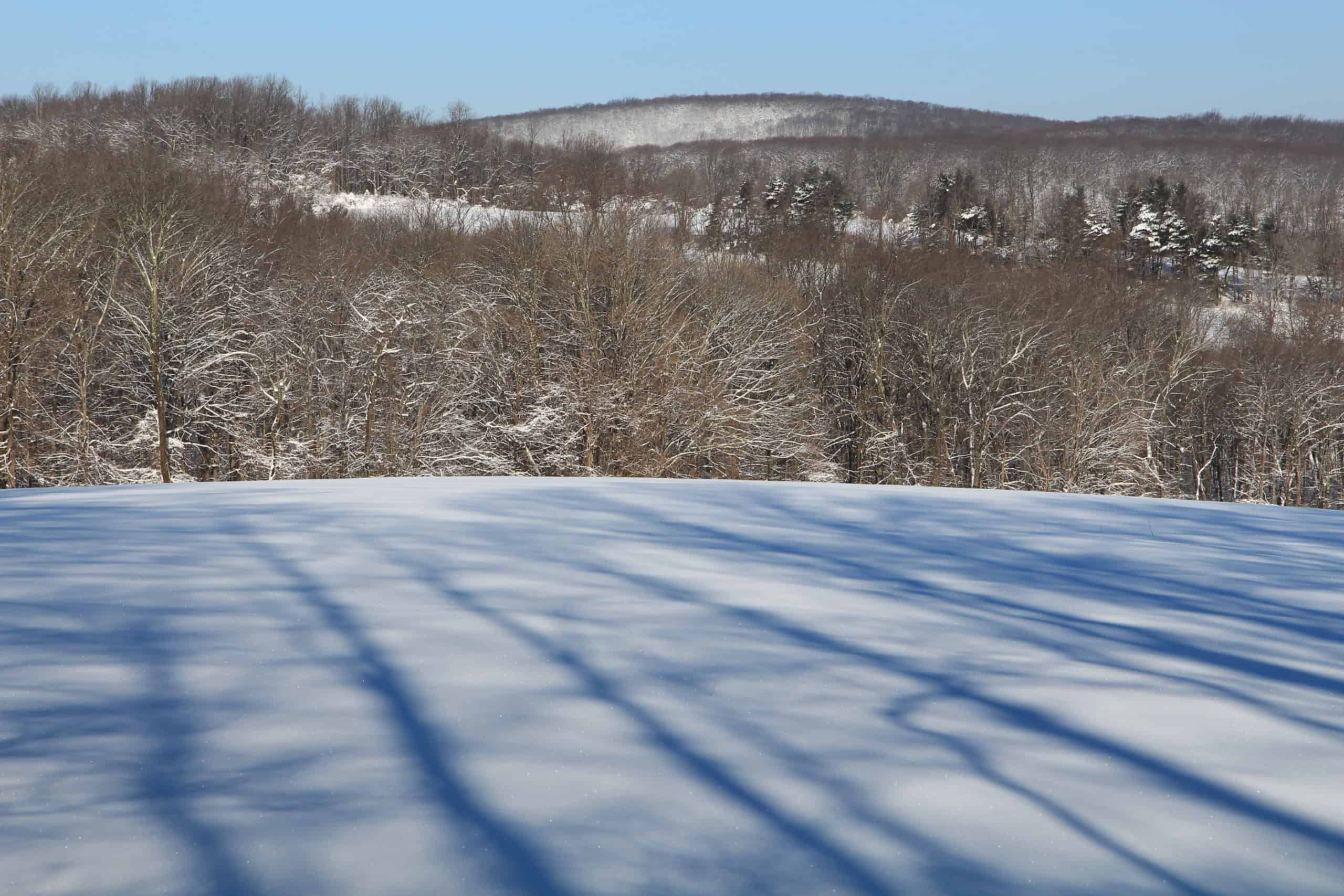Crow’s Nest: Varied habitats
By Daniel Barringer, Preserve Manager.
A few weeks ago I wrote about the highs and lows of the preserve—literally the altitudes that the land here occupies. What are the implications of a land of rocky uplands, silty floodplains, slopes and seeps? The short answer: a great diversity of habitat types in an area that is only a little more than a square mile, and with that, a broad range of plants and animals that take advantage of specific conditions offered by those many kinds of habitats.
Foresters and wildland firefighters know that slope and aspect (the steepness and direction a slope faces, respectively) profoundly affects what plants grow on a site and how fire behaves when consuming fuels there. A north facing slope or a steep gorge may have a cooler, more moist habitat that supports Canadian hemlock (see falls of French Creek below nearby St. Peter’s Village, for example). South- or west-facing slopes are the hottest and on them grow plant communities that are adapted to the conditions or fire regimes there.
Plant communities are named by a classification system, though it is recognized that actual plant communities may vary from the terms used to describe them. Often the community is named by the one to three species that dominate it. See Terrestrial and Palustrine Plant Communities of Pennsylvania by Jean Fike (1999): https://www.naturalheritage.state.pa.us/fikebook.aspx

Photo: Daniel Barringer
Above, some of the more steep slopes at Crow’s Nest, the south side of the “Monocacy Hill” part of the preserve. This plant community, called a Dry Oak – Heath forest, supports chestnut oak, mountain laurel, pinxterbloom azalea, and blueberries, huckleberries, and deerberries, among other species.
Elsewhere at Crow’s Nest, Mine Run flows through a Tuliptree – Beech – Maple Forest (shown below) as well as (downstream) a Red Maple – Palustrine Forest. The difference between these two forests is probably related to the underlying geology and how rocky vs. silty each reach of the stream is.

Photo: Daniel Barringer
Other naturally-occuring plant communities at Crow’s Nest include Oak – Mixed Hardwood Palustrine Forest, Red Oak – Mixed Hardwood Forest, Dry Oak – Mixed Hardwood Forest, Meadows, and Open Wetlands Complex.

Photo: Daniel Barringer
Artificial or intensely-managed plant communities here include Edge – Old Field, Landscaped Areas, Pine Plantations, Hedgerows, and Row Crops. Although these may provide some habitat, we think of them as having lower value to wildlife and protection of species than the more diverse naturally-occurring communities. This region already has plenty of edge habitat—basically much of the suburbs—and we are trying to manage for interior forest-dwelling species (both plants and animals, such as neotropical migrant birds) or alternatively, meadow species that need large meadows (such as ground-nesting birds).

Photo: Daniel Barringer
Claudia Steckel has performed an extensive botanical inventory here and mapped the plant communities (you can’t manage resources if you haven’t identified them).
In a survey performed over several years and multiple seasons, Claudia identified a large number of different plant species: 76 species of trees, 63 shrubs, 43 vines, 25 ferns and fern allies, 76 sedges and rushes, 72 species of grasses, 365 herbaceous plants, and 25 mosses.
We wouldn’t have that kind of diversity if the habitat here was more homogenous, and a lot of what makes the habitat diverse here is the geomorphology, or shape of the land, supporting a variety of types of habitats.
